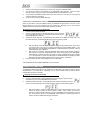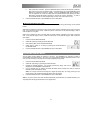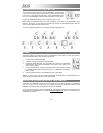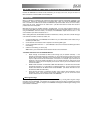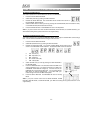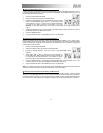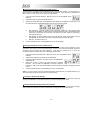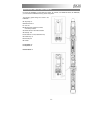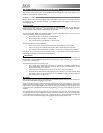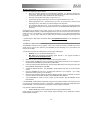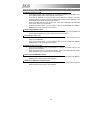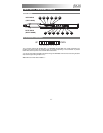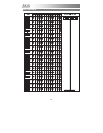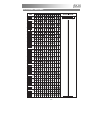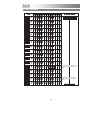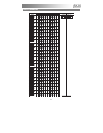
34
CHAPTER 5: MISCELLANEOUS NOTES
This section contains various notes on the EWI4000s features and functions that may be helpful as you
familiarize yourself with this unique instrument.
EVI FINGERINGS
The EVI (electric valve instrument) fingerings may be well suited for brass players or reed players who wish
to experiment more with “brass-like” fingerings. This section explains some important points about how
these fingerings work.
The Right Hand
The right hand controls the three “valves” as well as the first Trill Key and third Trill Key (see THE TRILL
KEYS section for more information). The right hand thumb also controls the PITCH BEND BUTTONS.
Vibrato is created by gently biting the MOUTHPIECE with your teeth.
The right hand index, middle, and ring fingers activate the three “valve” keys (Keys 8, 9, and 10) as one
would on a trumpet or similar valved brass instrument:
y Key 8 lowers the pitch two half steps (-2) when touched.
y Key 9 lowers the pitch a half step (-1) when touched.
y Key 10 lowers the pitch three half steps (-3) when touched.
The other right-hand keys function differently:
y Key 7 acts as the first Trill Key which raises the pitch two half steps (+2) when touched.
y Keys 11 and 12 are non-functioning and provide a place to rest the right hand pinky finger.
y Key 13 functions as the third Trill Key on the EVI. It raises the pitch +4 half steps when touched.
EVI players may be wondering where the second Trill Key is. The equivalent of the second Trill Key is
activated by the left hand in several ways as explained below.
The Left Hand
The left hand controls the octave, half octave, and second Trill Key. The left hand thumb also controls the
GLIDE PLATE. Grip the EWI4000s with the left hand and keep your fingers on Keys 3 and 4. This should
provide a firm, comfortable grip.
The left-hand keys function in the following ways:
y Key 1 represents the canister index finger button on an actual EVI. Touching it lowers the pitch a
fourth (-5 half steps). Think of this key as the 4th valve on some brass instruments or the left
hand thumb attachment on a trombone.
y Keys 2 and 5 are non-functioning keys and acts as “barriers” to help prevent glitches.
y Key 6 acts as the second Trill Key, which raises the pitch a half step (+1/2) when touched. Lifting
your fingers of Key 3 or 4 or touching Key 6 (or any combination of these three keys) raises the
pitch a maximum of a half step (+1/2).
Trill Keys
With only seven right hand fingering combinations and 12 chromatic notes to cover, one must “crossover” to
the next half-octave halfway through the current octave.
There are two crossover points where both the right and left hands change at the same time. One is in the
middle of the octave between G and G#. The other is between C and C#, which is difficult as it requires five
finger changes. Since multiple fingers on both hands are changing simultaneously, these crossover points
can be tricky to play or trill between consistently without glitching. This is why the EVI fingering has the three
Trill Keys.
The Trill Keys make several note transitions easier and smoother to play since they actually raise the pitch.
So, instead of having to move five fingers at exactly the same time to trill from C to C#, you can simply finger
a C and use the second Trill Key to play the C#. Trill Keys can also be used in combination with other Trill
Keys or “valve” keys for alternate fingerings, making difficult musical passages easier to play.



